Look, I'll be honest - I was one of those people carrying two phones for way too long. Work phone in the right pocket, personal in the left, constantly grabbing the wrong one when it rang. Felt like I was living in 2005. That's when I finally caved and got my first dual SIM Samsung, and honestly, I wish I'd done it years earlier.
Turns out dual SIM phones are huge in places like India and Indonesia - we're talking about two-thirds of smartphone users according to DeviceAtlas (DeviceAtlas). Makes sense when you think about it - why carry two phones when one can do the job?

Samsung's been doing dual SIM longer than most, and they've got options from dirt cheap to flagship expensive. But here's the thing - not all dual SIM phones are created equal, and some of the gotchas aren't obvious until you're already using the thing daily.
What You Actually Need to Know Before Buying
The SIM Slot Situation is Messier Than You Think
Most modern Samsung phones use nano-SIM cards, which is fine. The problem is what they call "hybrid slots" - basically, you get to choose between a second SIM card OR a microSD card, but not both. Found this out the hard way when I realized I couldn't use my microSD card and both SIM cards at the same time.
If you're someone who needs tons of storage AND dual SIM, you're either looking at phones with massive internal storage or you're dealing with cloud storage whether you like it or not. The days of having dedicated slots for everything are mostly gone, which is honestly pretty annoying.
Network Support Gets Complicated Fast
Here's where it gets technical and kind of frustrating. Some phones only give you 5G on one SIM slot, which defeats the purpose if you need fast data on both lines. I learned this when my work SIM got stuck on 4G while my personal line was cruising on 5G.
The premium phones usually handle this better, but even then, you need to check if your specific carriers play nice with whatever bands the phone supports. It's not as plug-and-play as you'd hope.
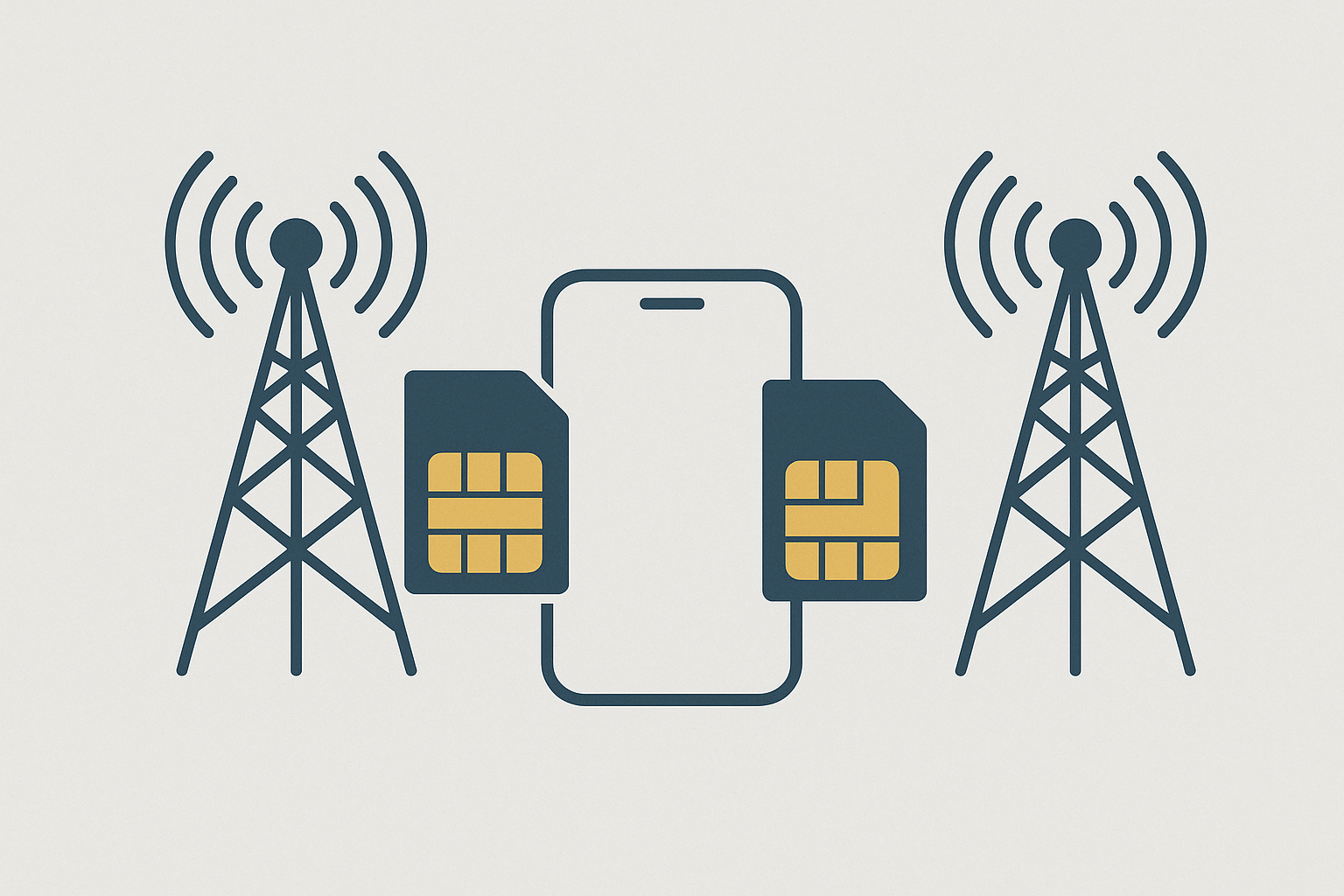
Battery Life Takes a Hit
Here's what nobody tells you about dual SIM phones - the battery drain is real. Your phone is basically working twice as hard to stay connected to two networks. I've had days where my Galaxy dies by 6 PM when it used to last until bedtime.
Look for phones with at least 4500mAh if you're planning to actually use both SIMs regularly. Trust me on this one.
The Price vs. Reality Check
Samsung dual SIM phones range from under $200 to over $1000, and honestly, you don't always get what you pay for. Sometimes the mid-range phones handle dual SIM better than you'd expect, and sometimes the flagship features you're paying extra for don't matter for your actual use case.
Don't forget you're also paying for two phone plans, which adds up fast. Sometimes spending more upfront on a phone with better carrier compatibility saves you money on the monthly bills.
The Premium Stuff (If Money's No Object)

Samsung Galaxy S24 Ultra
This is Samsung's kitchen sink approach - 6.8-inch screen, Snapdragon 8 Gen 3, up to 12GB RAM, and that built-in S Pen that's actually useful if you're into that sort of thing. Both SIM slots get 5G, which is how it should be but isn't always the case.
The titanium build feels premium, and the 5000mAh battery handles dual SIM usage without too much complaining. But you're paying flagship prices for flagship features, so make sure you'll actually use them.
If you're running a business or just want the best Samsung offers, this is it. The S Pen makes managing contacts across two different phone systems way easier than I expected.
Samsung Galaxy S24+ and S24
The S24+ gives you most of what the Ultra offers in a slightly smaller package with a 6.7-inch screen. Same processor, nearly the same performance, but you lose the S Pen and some camera features. Still handles dual SIM like a champ.
The regular S24 is the compact option at 6.2 inches. Great if you want flagship performance in a more manageable size, though the smaller 4000mAh battery means you'll feel that dual SIM drain more.
The Foldables (Galaxy Z Fold6 and Z Flip6)
Look, foldables are cool, but they're also expensive and require babying. The Fold6 is incredible for productivity with its massive 7.6-inch main screen - makes managing two different contact lists and call logs actually pleasant. But you're paying serious money and dealing with a phone that's thicker than a normal case when folded.
The Flip6 is more about style than function. It's unique, fits in small pockets when folded, but the battery life isn't great and you're still paying premium prices for the folding party trick.
The Sweet Spot: Upper Mid-Range
This is where Samsung really shines for dual SIM users. You get most of the important features without the flagship tax.
Samsung Galaxy S23 FE
The "Fan Edition" is basically last year's flagship with some corners cut to hit a lower price. 6.4-inch screen, Snapdragon 8 Gen 1 (which is still plenty fast), and solid dual SIM performance. Often goes on sale, which makes it even better value.
Samsung Galaxy A55 5G
This has been my daily driver for the past few months, and honestly, it's impressed me. 6.6-inch Super AMOLED screen that looks way more expensive than it is, decent Exynos processor, and 5G on both SIM slots. The camera isn't amazing in low light, but for the price? Can't really complain.
The hybrid slot situation is still annoying, but with 256GB internal storage, I've managed without the microSD card most of the time.
Samsung Galaxy A35 5G
Similar to the A55 but with a step-down processor and plastic back instead of glass. Still gets the job done for dual SIM use, and that 5000mAh battery goes the distance even with both SIMs active.
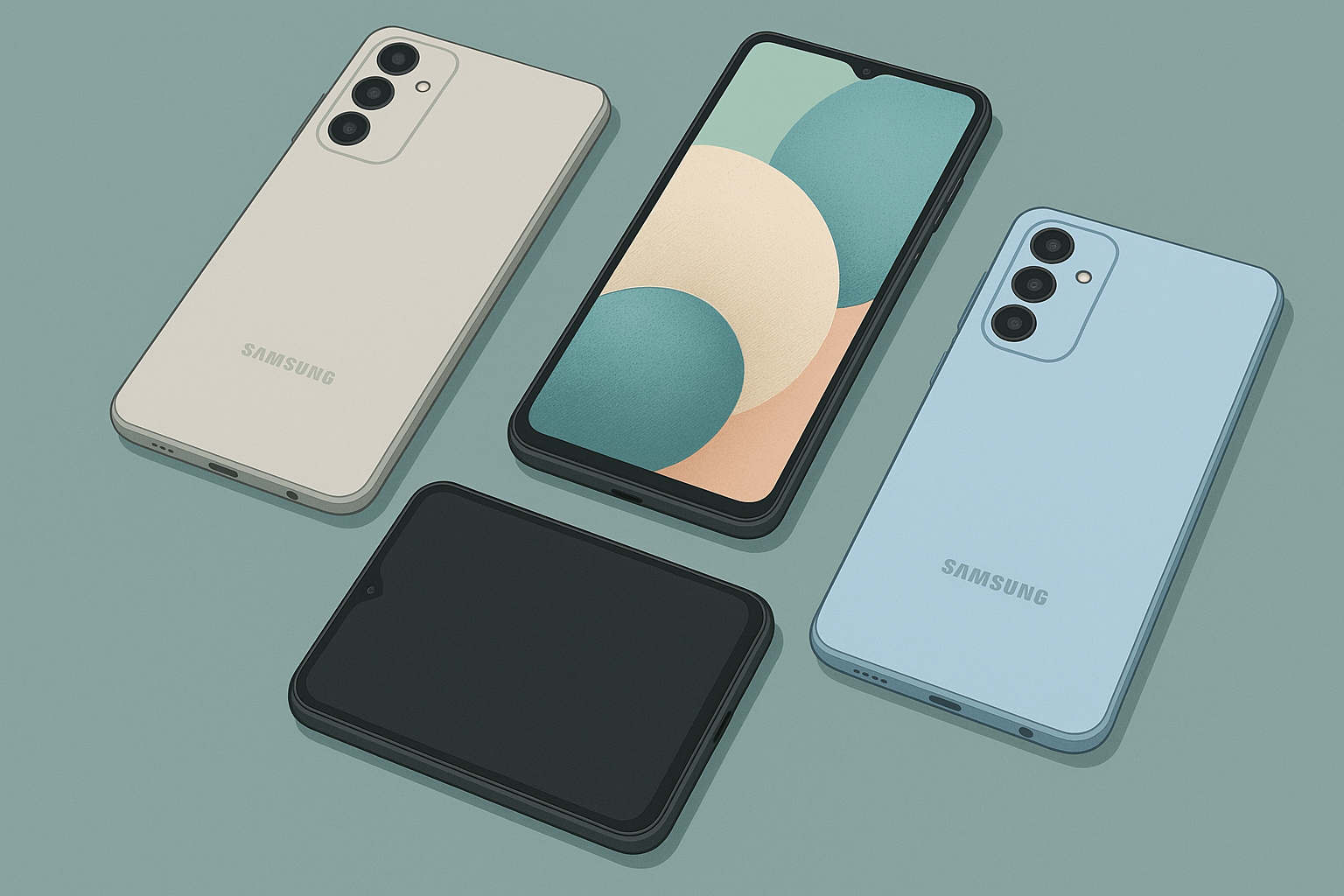
Budget Options That Don't Completely Suck
I used to think cheap Samsung phones were junk, but some of these budget options surprised me.
Samsung Galaxy A25 5G and A15 5G
The A15 is probably the cheapest way to get 5G dual SIM from Samsung right now. It's not going to win any speed contests, but for basic calls, texts, and light app usage across two numbers, it does the job better than I expected.
The A25 steps it up slightly with a bit more RAM and storage. Both have that massive 5000mAh battery that keeps going even with dual SIM drain.
Samsung Galaxy A05s
This is bare-bones dual SIM - no 5G, basic processor, but it's cheap and it works. If you just need two phone numbers and don't care about fast data speeds, it'll do what you need without breaking the bank.
The M-Series (M35 5G and M15 5G)
Samsung's M phones are all about battery life, and they deliver. The M35 has a 6000mAh battery that just keeps going, which is great when you're maintaining connections to two networks. The M15 is the budget version with the same massive battery approach.
Business and Productivity Focus
Samsung Galaxy Note20 Ultra
Yeah, it's getting old now, but you can find these at decent prices and they're still solid for business use. That S Pen integration makes managing two sets of contacts and notes way easier. Plus, the big 6.9-inch screen is great for productivity.
The processor is a few generations behind now, but for business apps and dual SIM management, it's still plenty fast.
Samsung Galaxy A73 5G
This one's got a big 6.7-inch screen and solid performance for the price. Good for business users who want a large display for productivity without paying flagship prices. The dual SIM implementation is reliable, and the battery life holds up well.
International and Regional Options
Samsung Galaxy S22 Ultra
Last generation's flagship, but you can often find these at significant discounts now. Still has all the premium dual SIM features, S Pen functionality, and flagship build quality. The Snapdragon 8 Gen 1 is still plenty fast for most people.
Samsung Galaxy A34 5G and F54 5G
These are more region-specific models with optimizations for particular markets. The F54 is big in India with features tailored for local networks and preferences. Worth considering if you're in the right market and can get a good deal.
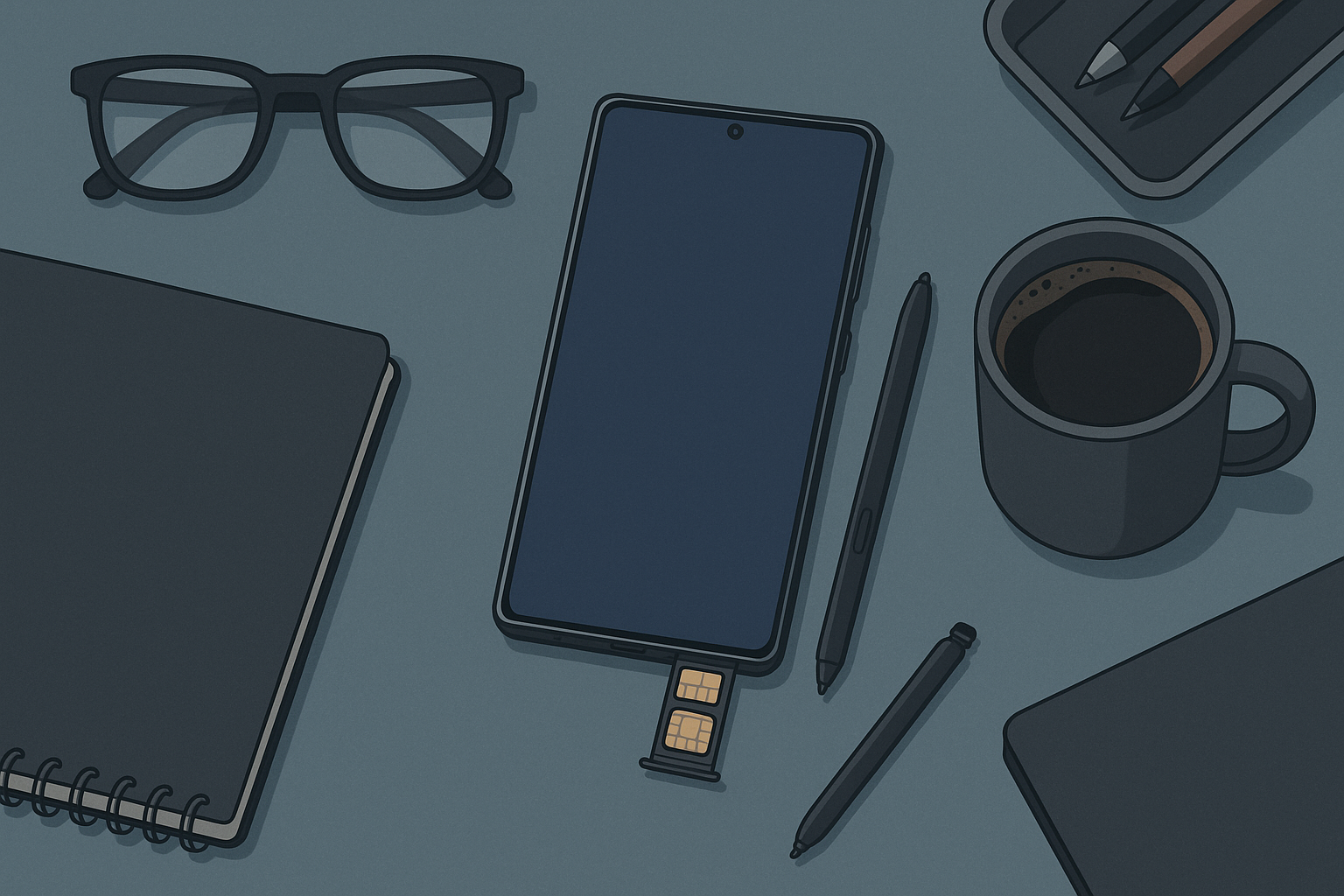
Rugged Options
Samsung Galaxy XCover6 Pro
If you work in construction, outdoors, or just tend to be hard on phones, this is worth considering. It's got military-grade durability ratings and still handles dual SIM well. Not the prettiest phone, but it'll survive when others won't.
Samsung Galaxy A14 5G
Basic durability improvements over regular phones, though nothing like the XCover. Good if you need something a bit more robust than the typical plastic phone but don't want to pay XCover prices.

Camera-Focused Picks
Samsung Galaxy S21 FE
Still one of the better camera phones you can get without paying current flagship prices. The dual SIM functionality is solid, and if you're someone who takes a lot of photos for work and personal use, having them automatically separated by which SIM you're using is pretty handy.
Samsung Galaxy A52s 5G and M52 5G
Both offer decent cameras for the price with reliable dual SIM performance. The A52s has been around long enough that you can find good deals, and the software is mature and stable.
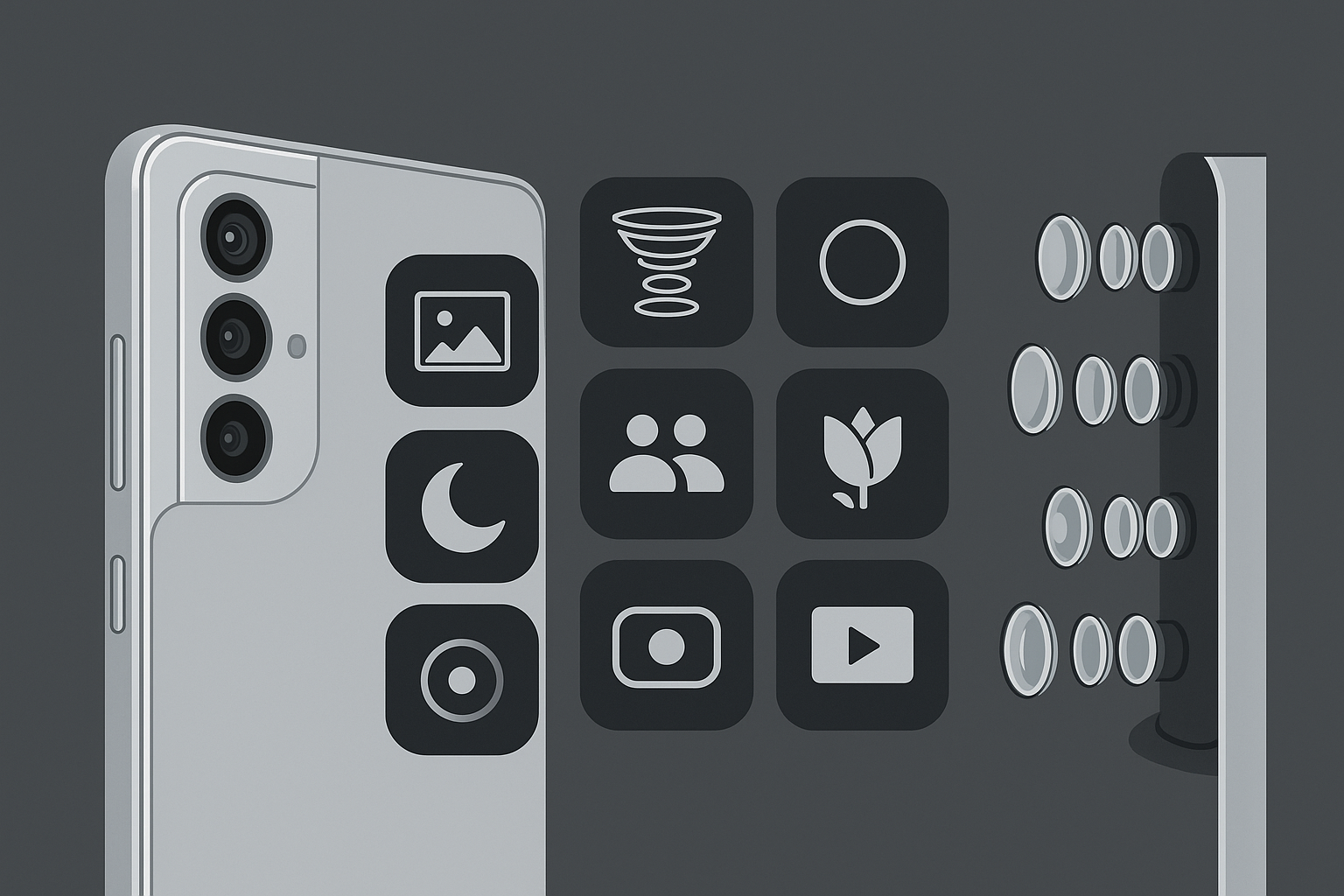
Protecting Your Investment
Real talk - if you're spending good money on a dual SIM phone, especially for work, get a decent case. I've dropped my phone more times than I care to admit while fumbling between work calls and personal texts.
Managing two phone numbers means your device sees heavier daily use and more handling. You're constantly switching between different contact lists, managing two sets of notifications, and generally putting the phone through more stress than single-SIM users.
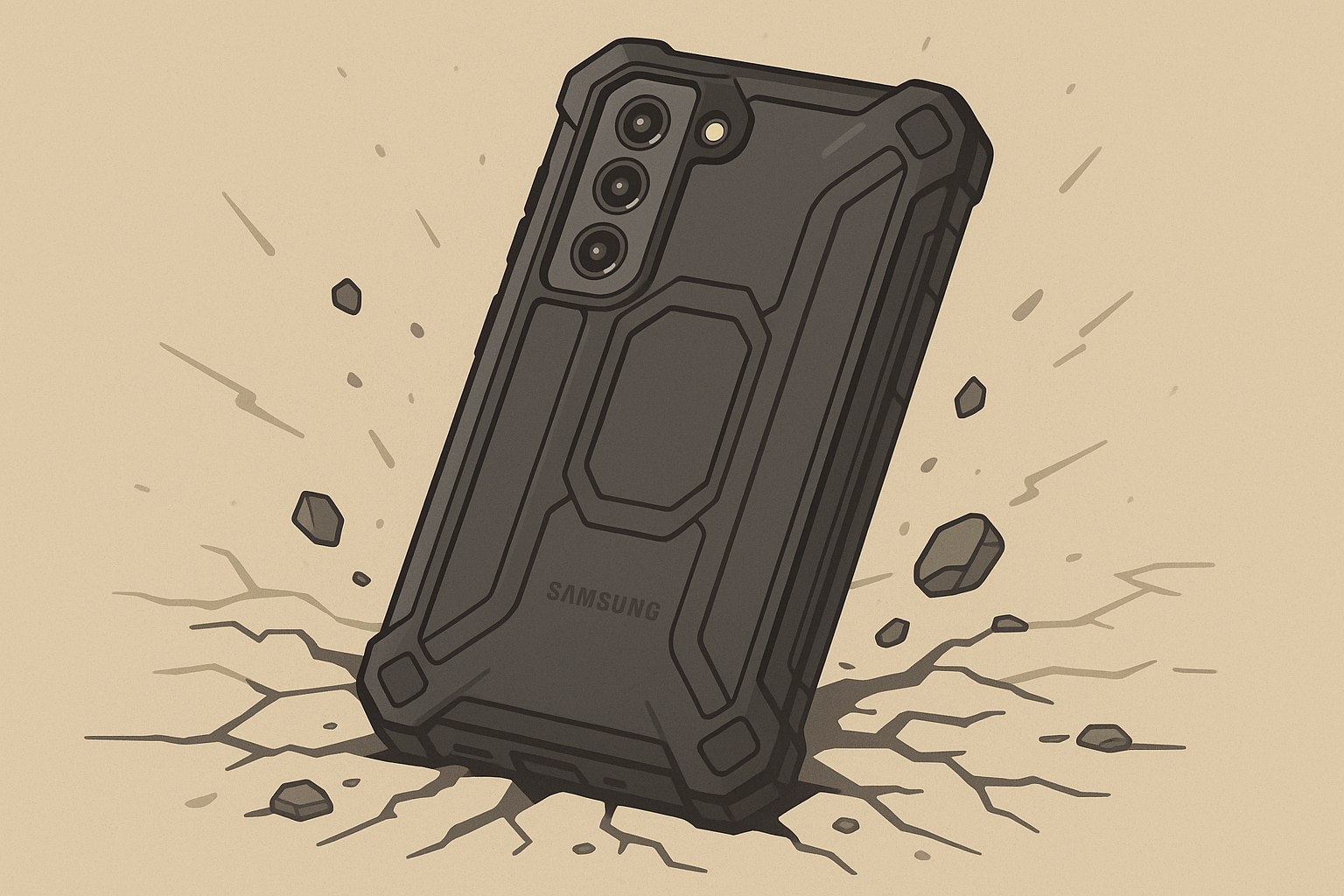
Rokform's cases have saved my Galaxy more than once with their 6-foot drop protection. The magnetic mounting system is actually pretty useful when you need hands-free access to manage calls from both numbers while driving or working.
My Honest Take
Look, there's no perfect dual SIM phone out there. You're always trading something off - battery life, storage, price, whatever. But Samsung's got the most options, and in my experience, they actually work without too much hassle.
The hybrid SIM slot thing is honestly the most annoying part of modern dual SIM phones. You shouldn't have to choose between two phone numbers and extra storage, but here we are.
If I had to pick right now, I'd probably go with the Galaxy A55 5G for most people. It's got the features that matter, decent build quality, and doesn't cost flagship money. But if you need the absolute best and money isn't a concern, the S24 Ultra is hard to beat.
Just figure out what matters most to you - do you need 5G on both lines? How important is camera quality? Are you okay with plastic build to save money? - and don't overthink it. Most of Samsung's dual SIM phones work pretty well; it's more about finding the right balance of features and price for your situation.
And seriously, get a case. Trust me on this one.




